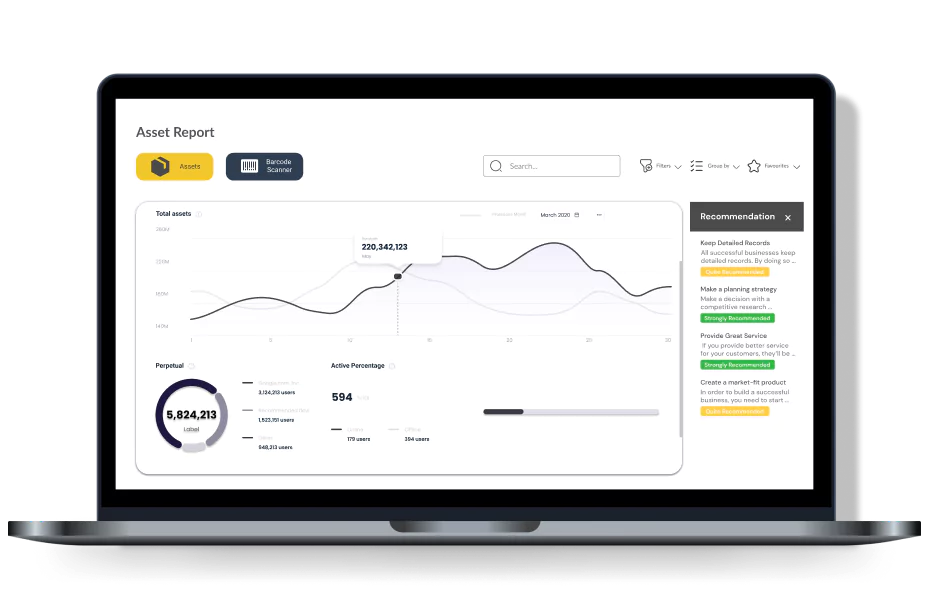Have you ever noticed how poorly managed assets can significantly increase costs and reduce operational efficiency? Asset Life Cycle Management (ALM) provides a strategic framework to guide business through each asset’s lifecycle, from acquisition to disposal.
By adopting ALM, companies can circumvent the common pitfalls of premature asset failures and exorbitant expenditures, ensuring optimal performance from each asset. Ignoring a robust ALM strategy often results in severe breakdowns and operational halts that hinder business progress.
We will delve into the critical stages of ALM, offering key insights on how businesses can use these practices to turn their asset management into a pivotal strength. Continue reading to learn how to effectively apply these strategies in your business.
Key Takeaways
|
Table of Contents

Asset Life Cycle Management Definition

Asset Lifecycle Management (ALM) is a comprehensive approach that oversees each phase of an asset’s life. From acquisition to disposal, it ensures maximum efficiency and value retention. This strategic management process prevents premature asset failure and excessive costs.
By meticulously planning, procuring, operating, maintaining, and disposing of assets, ALM helps businesses avoid costly disruptions. It enhances asset performance throughout its operational lifecycle, safeguarding investments and boosting business resilience and profitability.
Why ALM is Important
Does your business grapple with high costs due to premature asset replacement or experience safety incidents stemming from inadequate asset management? These issues often indicate ineffective Asset Life Cycle Management (ALM) and can negatively impact the value and utilization of current assets.
Some of the things better ALM fixed are:
- Reduced Operational Costs: ALM helps prevent premature asset replacement by optimizing the performance and lifespan of each asset.
- Enhanced Safety: By maintaining assets properly, ALM minimizes the risk of workplace incidents caused by faulty or failing equipment.
- Increased Efficiency: With strategic asset management, operations run smoother with fewer interruptions, enhancing overall productivity.
- Regulatory Compliance: ALM ensures that assets are managed and decommissioned in compliance with relevant laws and regulations, reducing legal risks.
Implementing ALM can significantly address and resolve many common business problems by overseeing the entire lifespan of an asset—from its initial purchase to its ultimate disposal. Asset Lifecycle Management isn’t just about fixing current issues—it’s about setting a foundation for sustained operational success.
Stages of Asset Life Cycle Management
Effectively managing an asset’s lifecycle requires careful planning, procurement, operation, and disposal. Each stage plays a critical role in optimizing asset performance and minimizing costs throughout its lifespan.
| Stages | Explanation |
|---|---|
| Planning Stage | Businesses assess asset needs by considering budget, growth, and strategic goals. Proper planning prevents resource waste and inefficiencies. |
| Procurement Stage | This phase focuses on acquiring assets that meet business requirements. Poor procurement can lead to suboptimal selection and higher costs. |
| Operation and Maintenance Stage | Regular maintenance of assets ensures peak performance and minimizes unexpected failures, reducing costly downtimes. |
| Disposal Stage | At the asset’s end-of-life, its residual value guides recycling, selling, or disposal decisions. Poor disposal can result in financial losses and compliance issues. |
By carefully managing each stage, businesses can enhance asset performance, extend their lifespan, and reduce overall costs. This strategic approach to lifecycle management not only optimizes asset value but also aligns with long-term business objectives.
Best Practices in ALM Software Utilization
Utilizing advanced ALM software can significantly improve how your business manages its assets. Implementing best practices with the right software can streamline asset tracking, maintenance, and disposal, ensuring optimal performance and cost efficiency.
- Real-Time Tracking: ALM software offers live updates on asset status and location, enabling immediate operational adjustments when needed.
- Asset Value Updates: Monitoring asset depreciation and value changes ensures precise financial reporting and supports better budgeting decisions.
- Maintenance Analytics: Predictive maintenance tools schedule timely repairs based on data-driven insights, preventing unexpected asset failures.
- Planning for Disposal: The software assists in planning asset disposal by assessing end-of-life value and promoting environmentally friendly decommissioning.
By incorporating these practices, businesses can maximize asset performance, minimize costs, and enhance overall operational efficiency. Advanced ALM software becomes a valuable tool in achieving long-term asset management system success.
Types of Asset Life Cycles to Consider
Different assets demand tailored lifecycle management approaches to optimize their use and extend their value. Each asset category requires unique strategies to ensure effective management throughout its lifecycle.
| Asset Lifecycle Type | Description |
|---|---|
| Software Asset Management Life Cycle | Focuses on managing software licenses, from acquisition to decommissioning, ensuring compliance and cost-efficiency. |
| Fleet Life Cycle Management | Oversees the lifecycle of vehicle fleets and machinery, including procurement, operation, maintenance, and disposal. |
| IT Asset Life Cycle Management | Tracks IT hardware and software from procurement through disposal, ensuring support for business operations. |
| Digital Asset Life Cycle Management | Manages the creation, storage, and archiving of digital content to maximize its value and usability. |
Implementing specific lifecycle approaches for each asset type enhances their performance, reduces costs, and supports the business long-term objectives.
Transform Your Asset Life Cycle Management with HashMicro

Managing assets effectively throughout their lifecycle is essential for maintaining operational efficiency and cost savings. HashMicro offers a comprehensive solution that streamlines every phase of asset management, ensuring businesses get the most out of their investments.
- Asset Comprehensive Cost Reporting: Provides detailed insights into asset costs throughout their lifecycle, aiding in financial planning and decision-making.
- Asset Maintenance Budget: Allows for effective budgeting and planning of maintenance, extending asset life and optimizing performance.
- Asset GPS Tracking: Monitors asset location in real-time, ensuring better resource allocation and informed disposal decisions.
- Fully Integrated with Accounting to Track Depreciation: Keeps track of asset depreciation over time, providing accurate financial reporting and supporting end-of-life decisions.
With HashMicro, as one of the best asset management software providers, businesses can transform their asset lifecycle management, enhancing asset performance and driving sustainable growth. Implementing this solution not only improves operational efficiency but also ensures long-term profitability.
Conclusion
Effective asset lifecycle management is key to reducing costs, enhancing efficiency, and ensuring compliance in business operations. By implementing best practices and using advanced ALM software like HashMicro, companies can optimize asset performance and extend their lifespan.
This strategic approach transforms asset management into a pivotal strength, driving growth and long-term profitability. Ready to take control of your asset lifecycle management? Schedule your free demo today and see how it transform your business!
Frequently Asked Questions
-
What is the asset useful life cycle?
The asset useful life cycle is the period during which an asset remains functional and valuable. It covers stages from acquisition to disposal, including operation, maintenance, and eventual replacement.
-
How to manage asset lifecycle?
Manage asset lifecycle by planning, procuring, operating, maintaining, and disposing of assets strategically. Use ALM software for real-time tracking, maintenance scheduling, and financial reporting to optimize performance.
-
Why is asset lifecycle management important?
Asset lifecycle management reduces costs, prevents premature failures, and ensures regulatory compliance. It optimizes asset performance, extending its useful life and supporting long-term business growth.





































